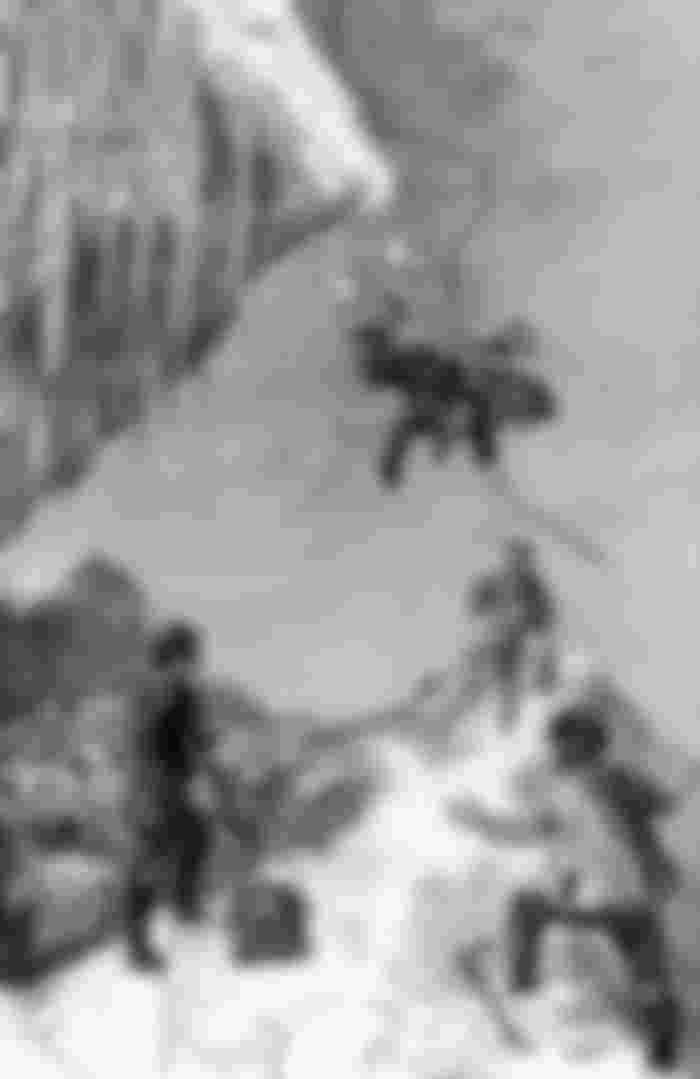My dear virtual friends! Last night I watched a movie that left a strong impression on me. I just think about it all day.
What is that? Love, desire for success, adventure that costs you your life, adrenaline?
Feeling left to your own abilities alone, without help in hopeless situations, clothed in strength or weakness, without addressing anyone but yourself; climb from rock to rock, from grip to grip, from ridge to ridge, relentlessly, for hours and hours, with a sense of height and imminent danger all around; and finally, after a rigorous examination of reliance solely on self-discipline, a feeling of indescribable liberation, solar loneliness, and silence ensues; the end of the struggle, the subjugation of fears and the discovery of a boundless horizon, miles around, while everything else lies below, below - in all this it is possible to really find a real possibility of purification, awakening and rebirth of something transcendent.
A true story translated into the movie "North Face".
Tony Kurz was a German mountaineer from the beginning of the twentieth century. He was the first to conquer many peaks together with his childhood friend Andreas Hinterstojsse. Both died in tragic circumstances in 1936, as part of a four-member team that tried for the second time to conquer the northern side of the Eiger peak in Switzerland.

During the climb, his companion Willie Angerer was injured by rocks that fell due to warming as they crossed the first ice field. Due to the worsening condition of Angerer during the crossing of the second ice field, they decided not to continue further to the top, but to go back to the bottom. The situation was further aggravated when the team failed to find the route they took along the location known today as Hinterstois Pass, so they had to return the hard way.

Later, another avalanche occurred in which Hinterstois himself lost his rope connection with the other members, fell over the edge and died. The same avalanche pushed Angerer, who was descending below Kurz, over the edge. He hit a rock and died. He was tied with a rope to a fuse they had installed because Kurz and Angerer were hanging on him. The weight of these two was so great that the rope tightened tightly around Reyer's chest and suffocated him. After the avalanche, Kurz was the only one left alive, while his three friends disappeared.

The rescuers took with them a long rope, 60 meters long. Hans Schluneger put this rope between his back and the backpack (not in the backpack as is usually the case) to save time. Unfortunately, while moving on the steep rocks, the rope fell out and fell down the cliff. Because of that, they had to connect two shorter ropes, which were again of insufficient length. Kurz pulled this rope to himself, fastened it to the mountain and began his descent. When he arrived only ten meters from the rescuers, he was stopped by a knot that connected two shorter ropes.

That knot was supposed to pass through the metal ring that was between his legs and with which he controlled the speed of his descent. In order to be able to push the knot through the ring, it was necessary to pull uphill and reduce the pressure. He desperately tried to pull himself up to pull the knot, but in vain, he was exhausted. Seeing that the situation was hopeless, he just said: "Ich kann nicht mehr" ("I can't take it anymore") and exhaled.
His lifeless body was later lowered by members of the German rescue team.
This tragic story became famous after the publication of Heinrich Harer's book from 1960 - The White Spider. Recently, the story was retold in the book by mountaineer Joe Simpson - Tempting Silence, after which the documentary that won the Emmy Award was filmed, as well as in the German drama Ice Abyss from 2008.

Thank you! @Snezana28





I haven't watched this movie. It looks good.